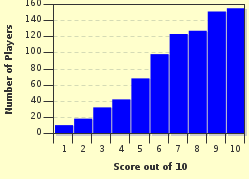Quiz Answer Key and Fun Facts
1. The neurones of the human body are long, thin structures that allow impulses to travel from receptor cells to the central nervous system to be processed. Do all such impulses have to go to the brain?
2. Neurones are classified into three main groups, the sensory neurones, the motor neurones and the relay neurones. They all have the same basic structure, mainly that they are relatively long. What part of the neurone is responsible for the length and is used in the propagation of an impulse?
3. Some neurones have no protection whilst others are heavily insulated. The neurones that are insulated by a certain membranous structure propagate nerve impulses at a greater rate. What is the name of this insulating structure?
4. In a neurone that is insulated by membranous structures, there are intermittent interruptions where the neurone is exposed. What are these nodes called?
5. In between neurones there is a small gap along which chemicals are sent from one neurone to the other. What is the name given to these chemical substances?
6. Impulses are propagated along a neurone by the diffusion of potassium ions and sodium ions. These ions affect the charge inside the neurone and set up a potential difference. What is the unit of potential difference?
7. Many nerves branch off into smaller nerves and one example is the mandibular nerve branching off into the lingual nerve. From which part of the body does the lingual nerve detect stimuli?
8. Nervous responses are brought about by the processing of electrical impulses (action potentials) generated by stimuli. Such stimuli are detected by various receptors of the body. Examples of receptor cells include the rods and cones, but, what type of stimuli are these cells sensitive to?
9. Distributed throughout the body are Pacinian corpuscles. These are a type of receptor cell, but, what type of stimuli do Pacinian corpuscles detect?
10. As with most parts of the body, neurones can often cause humans (and other animals) disabilities. What is the name of the group of neurological disorders that include what is known as 'Lou Gehrig's Disease' in the USA and 'Maladie de Charcot' in France?
Source: Author
jonnowales
This quiz was reviewed by FunTrivia editor
crisw before going online.
Any errors found in FunTrivia content are routinely corrected through our feedback system.

